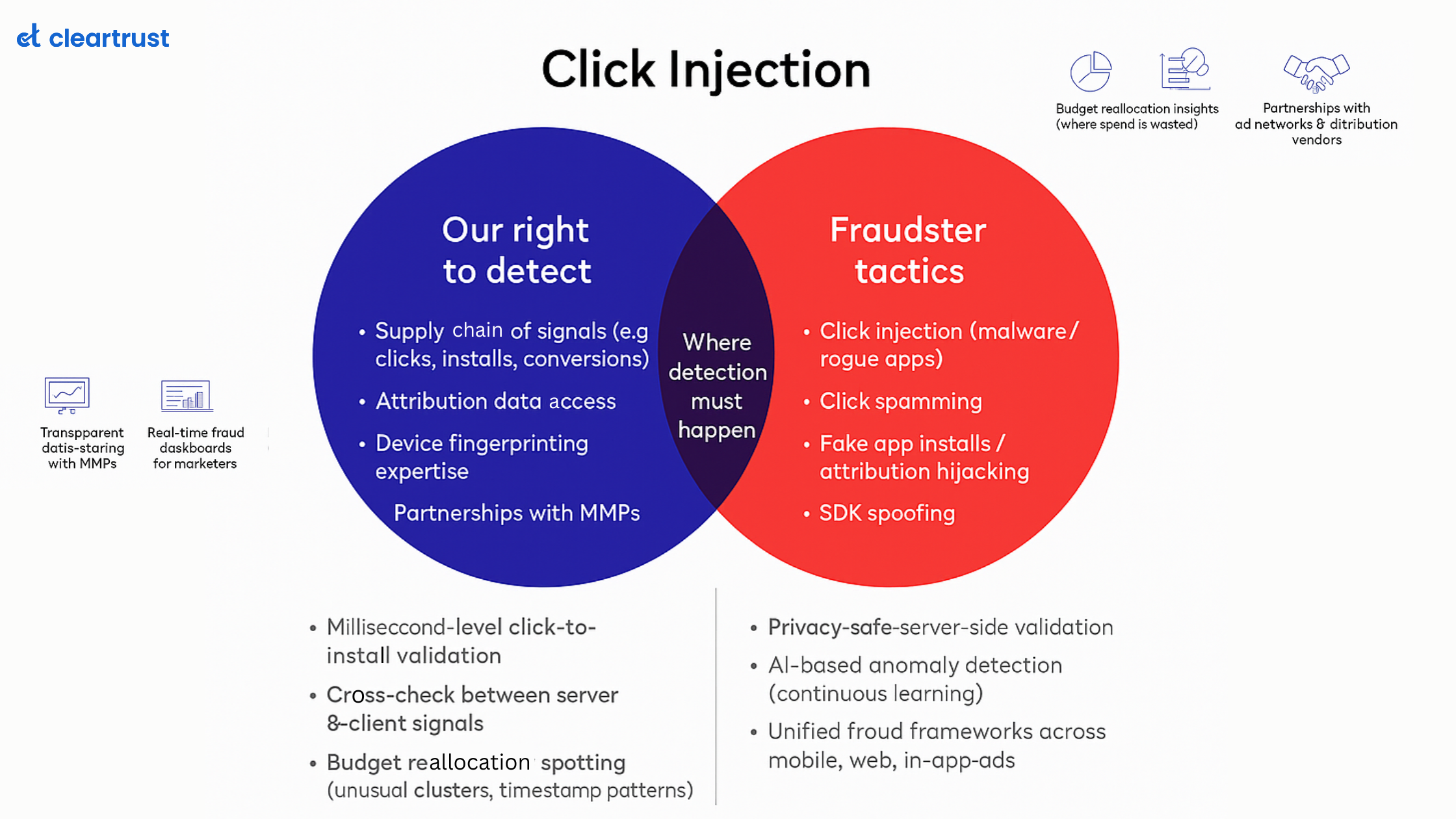In the fast-paced world of mobile advertising, it is no surprise that ad fraud has become a major concern for businesses of all sizes. From bots and click farms to ad stacking and fake installs, mobile ad fraud is a complex and ever-evolving problem that can wreak havoc on your marketing budget.
The global mobile ad spend is estimated to reach 495 million dollars by 2024. Associated with this is the growing concern of mobile ad fraud which has significantly contributed to the global ad fraud estimated to reach 100 billion dollars by 2023.
It’s high time that we constantly keep ourselves updated with how this form of programmatic fraud can be unhealthy for our campaigns and we start playing our significant part in assuming the role of a mobile fraud ninja before planning our next campaign. Let’s understand mobile ad fraud in detail
What is mobile ad fraud?
As well known to us that digital advertisements have payment schemes like CPA, CPI and CPM attached to them. Fraudsters usually take advantage of ecosystems where such payments are maximum and accordingly, devise techniques to use bots and other techniques to commit financial fraud of exorbitant amounts.
Mobile ad fraud is one such sub-category of ad fraud which is carried out across mobile devices, either through the browsers on the mobile devices or the applications installed on the mobile devices.
This type of fraud inflates engagement and other important metrics associated with the efficient performance of mobile ads which creates additional pressure on the pockets of the advertisers and millions are lost to such infected campaigns.
How does a mobile fraud take place?
There are certain techniques and tactics to be watchful of which can indicate a potential fraud on the mobile ads you run.
1. Click fraud
This involves a bad actor using bots and real humans through click farms to generate fake impressions and clicks on the ads run on mobile devices to paint a brighter picture about the successful running of a campaign while there are no real users engaged with the advertisements in the background. Click fraud (attach the link to click spam blog) can create millions of fake impressions within seconds and there are advanced reverse engineering techniques used by fraudsters to escape vigilance.
2. Fake Impressions
Imagine browsing a website in your mobile device and you come across a webpage where the ad constantly appears between important parts of an article that you are reading. This is how fake impressions work. Fraudsters place ads at irrelevant places on a page or stack them together to increase impressions on the ad and occupy a huge chunk of the advertiser’s budget.
3. Fake Installs
As the name suggests, this type of fraud involves generating fake app installs by making it appear that the install ads are successfully generating results. This can be done by bots or by incentivizing installs which increases the action without any intent of using the app.
Impact of mobile fraud
1. Exhausted marketing budget
One of the direct impacts of mobile ad fraud falls on advertisers who are at the mercy of impressions, installs and other forms of engagements based on the payment model. An unimaginable increase in such engagements without subsequent conversions may lead to wastage of ad spend
2. Legal trouble
Mobile ad fraud has a direct linkage with the privacy of users who accept the licensing agreements while using an app or the privacy cookies while browsing over their devices. Compromise of ad inventories at the hands of fraudsters can result in violation of consumer protection laws and privacy invasion of users. This can create big trouble for publishers who stand at the risk of being banned by popular ad networks like Google AdSense when the invalid traffic is not kept under control.
3. Damaged Brand Reputation
Mobile ad fraud damages the reputation of the publisher whose inventory is affected by spam clicks and invalid impressions. With fake results, the credibility of the publisher is compromised and as a result, the brand value greatly reduces.
How to protect against mobile ad fraud?
1. Transparency in buying ad spaces
There are plenty of ad networks and DSPs out there that indulge in buying ad spaces for advertisers. However, it is the responsibility of the advertisers to carefully partner with reputable ad networks and publishers. There must be a demand for complete transparency regarding the placement of the ads, the measurement of metrics as well as validation of the kind of traffic exposed to the ads.
2. Verification process
As mentioned before, advertisers must constantly analyze the traffic report from the publishers to ensure that their ads are exposed to legitimate traffic and they are paying for valid impressions. Networks like Google AdSense have strict policies on countering ad fraud and ensuring that the amount of invalid traffic is kept under check for its publishers.
It is always recommended to partner with such networks and monitor the quality of traffic along with the publisher to ensure that the campaign is free from any bots or invalid actions like fake installs.
3. Ad fraud detection tools
Ad Fraud & IVT mitigation tools like ClearTrust provides seamless ad fraud countering solutions that can be integrated into your systems and instantly activated. There are various filters that keep track of incoming traffic to the inventories and the moment an invalid impression is identified, it can be monitored as well as blocked from the system.







